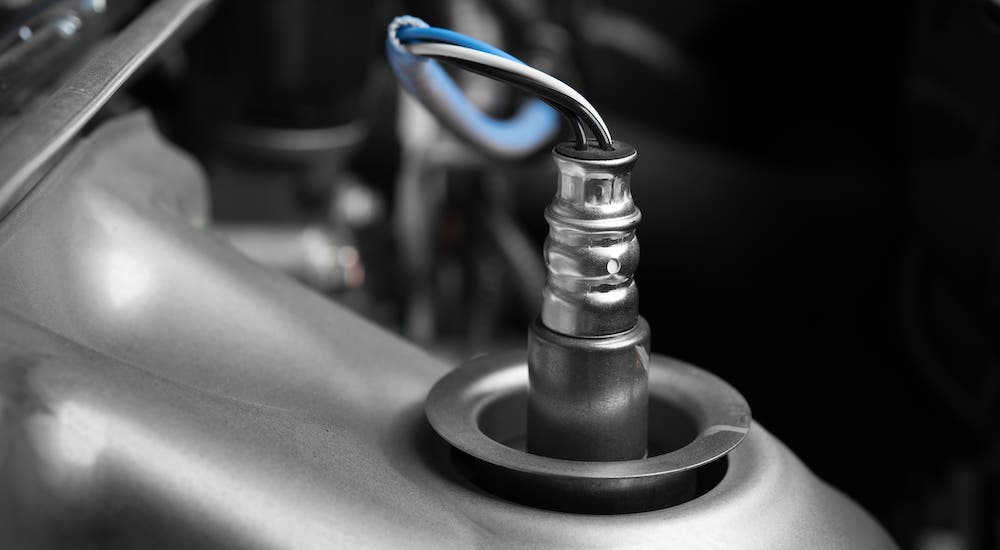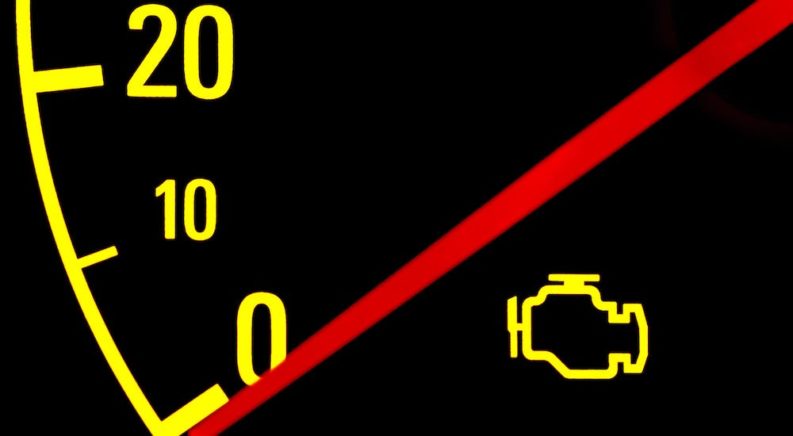When the check engine light comes on in the car, almost everyone feels their stomach drop. This anxiety-inducing light can mean a lot of different things. While none of those things are good, that doesn’t mean that they should be immediately scary either. As humans, we tend to imagine the worst-case scenario. However, those scenarios are rare. So, in most cases, it is safe to drive with the check engine light on, at least in the meantime before you get it checked out. But in this article, we will cover the main reasons why your check engine light is on and what you should do about it.
What Is the Check Engine Light?
Located on your dashboard, the check engine light will illuminate in the colors yellow, orange, or amber. Since it is a warning light, red was thought to be too alarming. Mechanics call it the malfunction indicator lamp because it is the first sign that something is amiss with your vehicle. The light is triggered when specific signals are sent to the vehicle’s computer. Standardized in 1996 under the OBD-II protocol, the check engine light should not be ignored for too long. Yes, you can continue to drive your vehicle with this light on, but we recommend that you drive it straight to your local mechanic to find out what’s wrong.
Pro Tip: If the check engine light is blinking, you need to stop the vehicle. A flashing check engine light indicates a very serious issue. It could be a problem with the catalytic converter. If this component overheats, it can become a fire hazard very quickly. We recommend calling for a tow service if the light is flashing to avoid a potentially dangerous complication.
What Does the Check Engine Light Mean?
As we mentioned before, an illuminated check engine light can mean a variety of things. It could be something as simple as a loose gas cap that simply needs to be turned one more time. If you suspect that this may be the issue, turn off the vehicle and close the gas cap again. Make sure that it’s tighter this time, and then you can start the vehicle. If the check engine light is off, then you have handled the issue yourself.
However, if the warning light is still on, you need to head over to your local mechanic. The technician will use a small, handheld computer to decipher the code from your vehicle’s internal computer. We will go over some of the most common issues related to the check engine now.
Oxygen Sensor
If the oxygen sensor (O2 sensor) fails, this will cause your vehicle to burn through fuel more quickly. The O2 sensor keeps tabs on the amount of unused oxygen inside the vehicle’s exhaust system. The measurement data is sent to the vehicle’s computer system, and it is then used to regulate the fuel-to-air ratio for optimal fuel efficiency. If you don’t address a faulty O2 sensor, it can cause more than just gas mileage issues. It can also cause problems with the spark plugs and the catalytic converter, which can be very dangerous in the long run.
- Average cost of repair: $244

Catalytic Converter
We have touched on the issue of the catalytic converter several times already, but we will go into a bit more detail now. Integrated into the exhaust system, a properly functioning catalytic converter is crucial to running the vehicle. Its job is to take the carbon monoxide produced during the engine combustion process and transform it into carbon dioxide. This helps to cut down on pollutants in the air too. With proper maintenance, a catalytic converter failure can be prevented.
- Average cost of repair: $1,371
Ignition Coils and Spark Plugs
Igniting the air-fuel mixture inside the engine’s cylinders requires functioning ignition coils. Modern gasoline-powered vehicles generally have one ignition coil for each cylinder. Diesel vehicles do not have ignition coils or spark plugs, so the drivers of diesel models can rule this issue out. Fault spark plugs and malfunctioning ignition coils can lead to slow acceleration and engine misfirings. These small components can even cause the vehicle to turn off unexpectedly, which can be very dangerous while driving.
- Average cost of repair: $391
Spark Plug Wires
Electricity needs to be transferred from the ignition coils to the spark plugs. The role of the spark plug wires is to make sure this goes off without a hitch. If the spark plug wires are bad, the fuel-air mixture inside the engine will not ignite. For something so small, it sure can cause a significant problem.
- Average cost of repair: $271
Mass Airflow Sensor
Monitoring how much air enters the engine is the job of the mass airflow sensor. It is an integrated part of the engine management system, and the vehicle will not be able to adjust to altitude changes without it. If your mass airflow sensor fails, the results will be reduced fuel efficiency, engine stalling, rough idling, and even a shift in the position of the throttle pedal.
- Average cost of repair: $340
Evaporative Emissions Purge Control Valve and Solenoid
Issues with the evaporative emissions purge control valve and solenoid often result in a vacuum leak. The vacuum system is responsible for a lot of different things. One of those things is the brake booster. This vacuum-operated component helps the environment by rerouting pollutants and harmful fumes through the engine. If your vehicle is surging will idling, this could indicate an issue with the vacuum system, particularly the evaporative emissions purge control valve or the solenoid.
- Average cost of repairs: $151

Fuel Injectors
As an integrated part of the engine’s fuel delivery system, the fuel injectors are responsible for taking fuel (gasoline or diesel) and spraying it as a high-pressure mist into the engine. The timing of the delivery and the amount of fuel used varies depending on the engine and the vehicle. If you hear a rough noise coming from the engine while idling, this could be an indication that the fuel injectors are malfunctioning.
- Average cost of repair: $449
Thermostat
The thermostat is situated between the radiator and the engine. Its job is to prevent the liquid coolant from getting to the engine before it has had time to properly warm-up. If your vehicle’s thermostat is faulty, this can cause rapid temperature fluctuations as well as overheating in the engine.
- Average cost of repair: $244
Driving with the Check Engine Light On
While you can drive with the check engine light on, we recommend deciphering the code as soon as possible. If you own a code reader, you can do this yourself by cross-referencing the code your vehicle gives you with a list of corresponding issues. If you find that it’s something minor, like the aforementioned loose gas cap, you can handle the problem on your own. If something more serious presents itself, then you need to get your vehicle to your local mechanic to resolve the issue.
In general, the check engine light is not a vehicle death sentence. Even the bigger issues can be taken care of if they are addressed in a timely manner. With proper vehicle care and maintenance, you can prevent most of the worst-case scenarios from ever happening.

